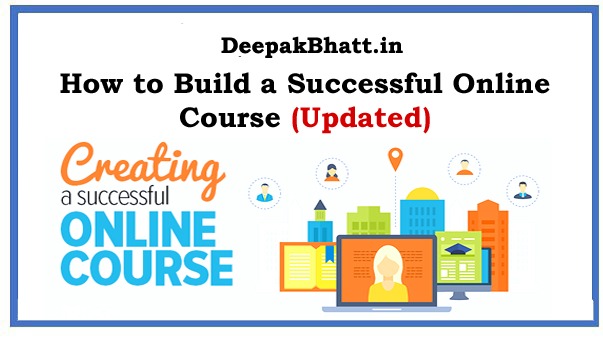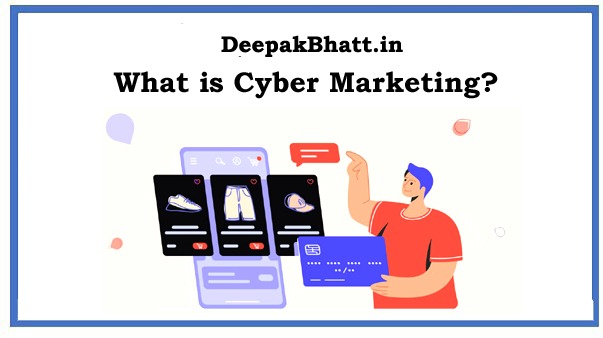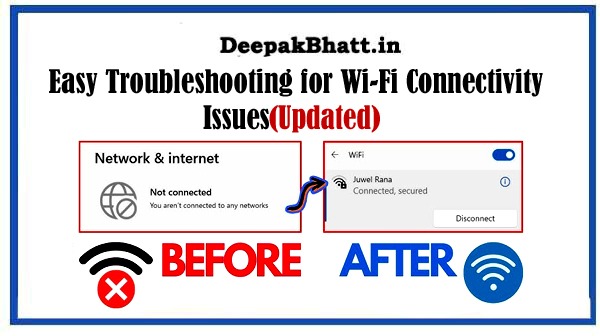How to create Online Course An online course is a digital learning experience that allows people to study a specific topic or subject online.
Online courses can take many different forms, from short, self-paced courses to more in-depth, interactive programs with live video sessions and online discussions.
Online courses offer several advantages over traditional classroom learning, including flexibility, affordability, accessibility, and convenience. Students can access the course material from anywhere at any time, making it easier to fit learning into their busy schedules.
10 Ways to Save Money on Your Next Vacation
Best ways to save money in the USA
Online courses are typically created by subject matter experts and instructional designers who structure the content and activities to deliver an effective learning experience. Many courses also include assessments, quizzes, and assignments to measure student progress and ensure that learning objectives are met.
There are various platforms available for creating and hosting online courses, including Udemy, Coursera, Skillshare, and Teachable, among others. These platforms offer tools for course creation, management, and marketing, making it easier for instructors to reach and engage their target audience.
Overall, online courses have become an increasingly popular way for people to learn new skills, improve their knowledge, and advance their careers in a convenient and cost-effective way.
You may Also Like:
How to Create Online Udemy Video Course
Best Udemy Courses with 85% off
Related Best Article:
The Power of Storytelling in Blogging
Blog title ideas: How to select title
How to Start a Successful Blog
How to Build a Successful Online Course
Building a successful online course requires careful planning and execution. Here are some steps to follow:
1. Define your target audience:
Know who your course is for and what problem it solves for them.
Defining your target audience means identifying the specific group of people you want to reach with your product or service. Your target audience should be a well-defined group that shares similar characteristics, such as demographics, interests, behaviors, or needs.
For example, if you are creating an online course about digital marketing, your target audience could be small business owners or marketing professionals who want to learn more about digital marketing.
To define your target audience, you can consider factors such as:
- Age range
- Gender
- Geographic location
- Education level
- Income level
- Job title or industry
- Hobbies or interests
- Challenges or pain points
Defining your target audience helps you tailor your messaging, product features, and marketing strategies to resonate with their needs and preferences. It can also help you focus your resources and achieve better results.
2. Choose a topic:
Pick a topic you are passionate about and have expertise in. Ensure it’s something your target audience wants to learn.
Choosing a topic depends on your interests, expertise, and the needs of your target audience. Here are some steps to help you choose a topic for your project:
Identify your interests and expertise: Consider the topics you are passionate about and knowledgeable in. Think about your hobbies, professional experience, or educational background.
Research market demand: Look for topics that are in demand or have a gap in the market. Check online forums, social media groups, and search engines to see what people are asking for or struggling with.
Define your target audience: Determine the audience you want to reach and the topics that would interest them. Consider their demographics, interests, and pain points.
Narrow down your options: Based on your research, narrow down your options to a few topics that align with your interests, expertise, and target audience.
Validate your idea: Test your idea by asking for feedback from your target audience or creating a minimum viable product (MVP) to see if there is a market for your idea.
Some examples of popular online course topics are:
- Digital marketing
- Entrepreneurship
- Personal development
- Coding and programming
- Photography
- Language learning
- Health and wellness
Remember that the topic you choose should be something you are passionate about and can provide value to your target audience.
3. Plan your content:
Develop a comprehensive outline for your course. Break down the content into smaller sections or modules.
Planning your content is an essential step in creating a successful online course. Here are some steps to help you plan your content:
Determine the course objectives: Define the specific outcomes you want learners to achieve after completing the course. The objectives should be measurable, realistic, and aligned with the needs of your target audience.
Outline the course structure: Create an outline of the course structure, including the topics you will cover, the length of each module, and the order in which they will be presented.
Identify the learning resources: Decide on the types of learning resources you will use, such as videos, articles, case studies, quizzes, or assignments. Ensure that the resources are relevant and engaging for the learners.
Create the learning materials: Develop the content for each module, including the videos, articles, quizzes, and assignments. Ensure that the content is clear, concise, and easy to understand.
Design the course visuals: Create visuals such as graphics, images, or charts to enhance the course materials and make them more engaging.
Test and revise the content: Test the content with a small group of learners and revise it based on their feedback. Make sure that the course is user-friendly, engaging, and achieves the course objectives.
Organize the content on the platform: Organize the course materials on the online platform, ensuring that the learners can easily access and navigate them.
4. Create engaging content:
Use various forms of content such as videos, audios, images, and text to make your course engaging and easy to understand.
Creating engaging content is crucial for keeping learners motivated and interested in your online course. Here are some tips to help you create engaging content:
Use multimedia: Incorporate multimedia such as videos, images, infographics, and interactive quizzes into your course materials. This makes the content more visually appealing and can help learners retain information better.
Provide real-life examples: Use real-life examples and case studies to demonstrate how the concepts or skills can be applied in real-world scenarios. This makes the content more relatable and relevant to the learners.
Break up the content: Divide the content into shorter sections, use headings, and bullet points to make it easier to read and digest. This helps learners avoid feeling overwhelmed and increases their engagement.
Use storytelling: Incorporate storytelling into your course materials to help learners connect emotionally with the content. This can make the content more memorable and engaging.
Encourage interaction: Encourage learners to interact with each other and with you as the instructor. Use discussion forums, live chats, and interactive quizzes to promote interaction and engagement.
Provide feedback: Provide learners with timely and constructive feedback on their assignments or quizzes. This helps them understand their strengths and weaknesses and motivates them to continue learning.
Gamify the learning experience: Use game-like elements such as badges, points, or leaderboards to make the learning experience more fun and engaging.
5. Choose the right platform:
Select an online course platform that meets your needs and budget. Ensure the platform has the necessary features such as course creation, management, and marketing tools.
Choosing the right platform for your online course is crucial for delivering your content effectively and providing a positive learning experience for your learners. Here are some factors to consider when choosing a platform:
Course delivery features: Ensure that the platform offers the features you need to deliver your content, such as video hosting, quiz creation, and discussion forums.
User experience: Look for a platform that is user-friendly and easy to navigate. The platform should have a clean and modern design that enhances the learning experience.
Integration options: Check if the platform integrates with other tools or services that you plan to use, such as payment gateways or marketing automation tools.
Security and reliability: Ensure that the platform is secure and reliable, with proper data protection measures in place. Look for platforms that offer regular backups and have a good uptime track record.
Pricing: Consider the pricing options of the platform, including any transaction fees or monthly subscription costs. Choose a platform that offers the features you need at a price that fits your budget.
Support: Look for a platform that offers good customer support, with helpful resources such as tutorials, documentation, and community forums.
Some popular online course platforms include:
- Teachable
- Thinkific
- Kajabi
- Udemy
- Skillshare
6. Price your course:
Determine the right price for your course. Conduct market research to understand the pricing of similar courses.
Pricing your course is an important decision that can impact the success of your online course. Here are some factors to consider when pricing your course:
Course value: Consider the value that your course provides to learners. If your course provides unique and valuable knowledge or skills, you can price it higher than courses that cover more general topics.
Course length: Longer courses may be priced higher than shorter courses, as they require more time and effort to create.
Course format: Courses that include additional resources such as videos, quizzes, or interactive assignments may be priced higher than courses that offer only text-based content.
Market demand: Consider the demand for courses in your niche and the prices of similar courses offered by competitors.
Target audience: Consider the financial situation of your target audience and price your course accordingly. If your target audience is students or people with lower income, you may need to price your course lower than if your audience is professionals or businesses.
Promotional pricing: Consider offering promotional pricing during the launch of your course to attract new learners and generate buzz.
7. Market your course:
Create a marketing plan that targets your ideal audience. Use social media, email marketing, and other digital marketing techniques to promote your course.
Marketing your course is crucial for reaching your target audience and generating sales. Here are some tips for effectively marketing your online course:
Build a website: Create a website dedicated to your course, including information on the course content, pricing, and a sign-up page.
Use social media: Promote your course on social media platforms such as Facebook, Twitter, and LinkedIn. Use relevant hashtags and engage with your followers to increase visibility.
Create content: Write blog posts, create videos, or record podcasts related to your course topic. This can help establish your authority in your niche and attract potential learners.
Offer a free trial: Offer a free trial or preview of your course to encourage learners to sign up.
Use email marketing: Build an email list of potential learners and send them regular updates about your course, including promotional offers and new content.
Collaborate with influencers: Reach out to influencers in your niche and offer them a free trial of your course in exchange for a review or promotion on their social media channels.
Attend conferences and events: Attend relevant conferences and events in your niche and promote your course to attendees.
Leverage paid advertising: Use paid advertising platforms such as Google Ads or Facebook Ads to target potential learners based on demographics and interests.
8. Collect feedback:
Collect feedback from your students and use it to improve your course. This will help you create a better experience for your students and increase your course’s value.
Collecting feedback from your learners is important for improving the quality of your course and enhancing the learning experience. Here are some tips for effectively collecting feedback:
Use surveys: Create a survey using a tool such as Google Forms or SurveyMonkey to collect feedback from your learners. Ask specific questions about the content, delivery, and overall experience of the course.
Offer incentives: Offer a discount or free resource in exchange for completing the survey to encourage more learners to provide feedback.
Use a rating system: Use a rating system for each module or lesson to help learners provide specific feedback on what they liked and disliked.
Collect feedback regularly: Collect feedback throughout the course, not just at the end. This can help you identify issues and make changes in real-time.
Monitor discussions: Monitor discussion forums and social media channels for feedback from your learners. Respond to feedback promptly and take action to address any issues or concerns.
Analyze the feedback: Analyze the feedback you receive to identify patterns and common issues. Use this feedback to make improvements to the course content and delivery.
Act on the feedback: Use the feedback to make improvements to the course, such as updating content or adjusting delivery methods. Communicate these changes to your learners to show that their feedback is valued.
9. Keep updating your course:
Keep your course up-to-date with the latest industry trends and updates. This will keep your students engaged and interested in your course.
Keeping your online course updated is important for maintaining its relevance and value for your learners. Here are some tips for effectively updating your course:
Monitor industry changes: Stay up to date with changes and advancements in your industry and update your course content accordingly.
Gather feedback: Collect feedback from your learners on a regular basis and use this feedback to identify areas for improvement or new content ideas.
Monitor performance: Monitor the performance of your course, such as completion rates and engagement metrics, and use this data to identify areas for improvement.
Set a schedule: Set a schedule for updating your course, such as quarterly or bi-annually, to ensure that it stays current.
Add new content: Add new content to your course on a regular basis to keep it fresh and engaging. This could include new lessons, resources, or activities.
Remove outdated content: Remove any outdated or irrelevant content from your course to ensure that it remains focused and valuable for your learners.
Communicate updates: Communicate updates to your learners through email, social media, or your course platform to show that you are committed to providing them with the most up-to-date and valuable information.
By following these steps, you can build a successful online course that meets the needs of your target audience and helps you achieve your goals.
Welcome all of you to my website. I keep updating posts related to blogging, online earning and other categories. Here you will get to read very good posts. From where you can increase a lot of knowledge. You can connect with us through our website and social media. Thank you







